Six years after the first pattern was published, GitOps has crossed the chasm and cleared the adoption threshold, which – for better or worse – means there are now a lot of people learning on the job!
CNCF’s latest microsurvey on GitOps found that 31% of respondents started using GitOps in their cloud and Kubernetes environments during the past 12 months. They joined the 60% who’d been working with GitOps for a year or more.
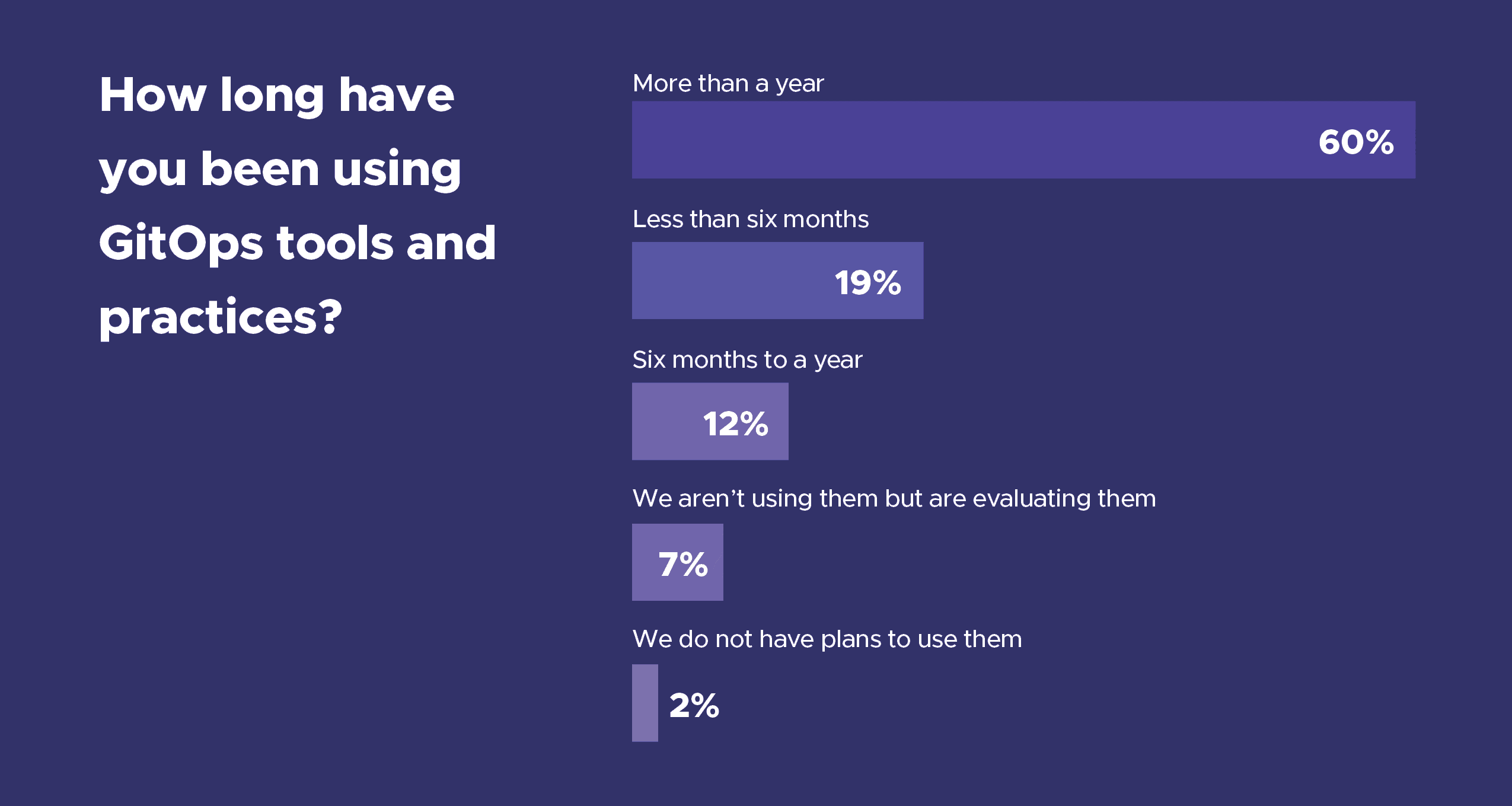
And, of those still holding out, a further 67% believe they will begin their journey to GitOps tools and practices during the coming year.

The backdrop for this is the rise and consolidation of multi-cloud and hybrid-cloud as the foundation for digital businesses (used by 47% and 35%, respectively), with the majority of respondents – 75% – running environments comprising up to 50 Kubernetes clusters. Further, more than half (54%) of respondents leverage GitOps in more than 26% of their cloud native deployments.
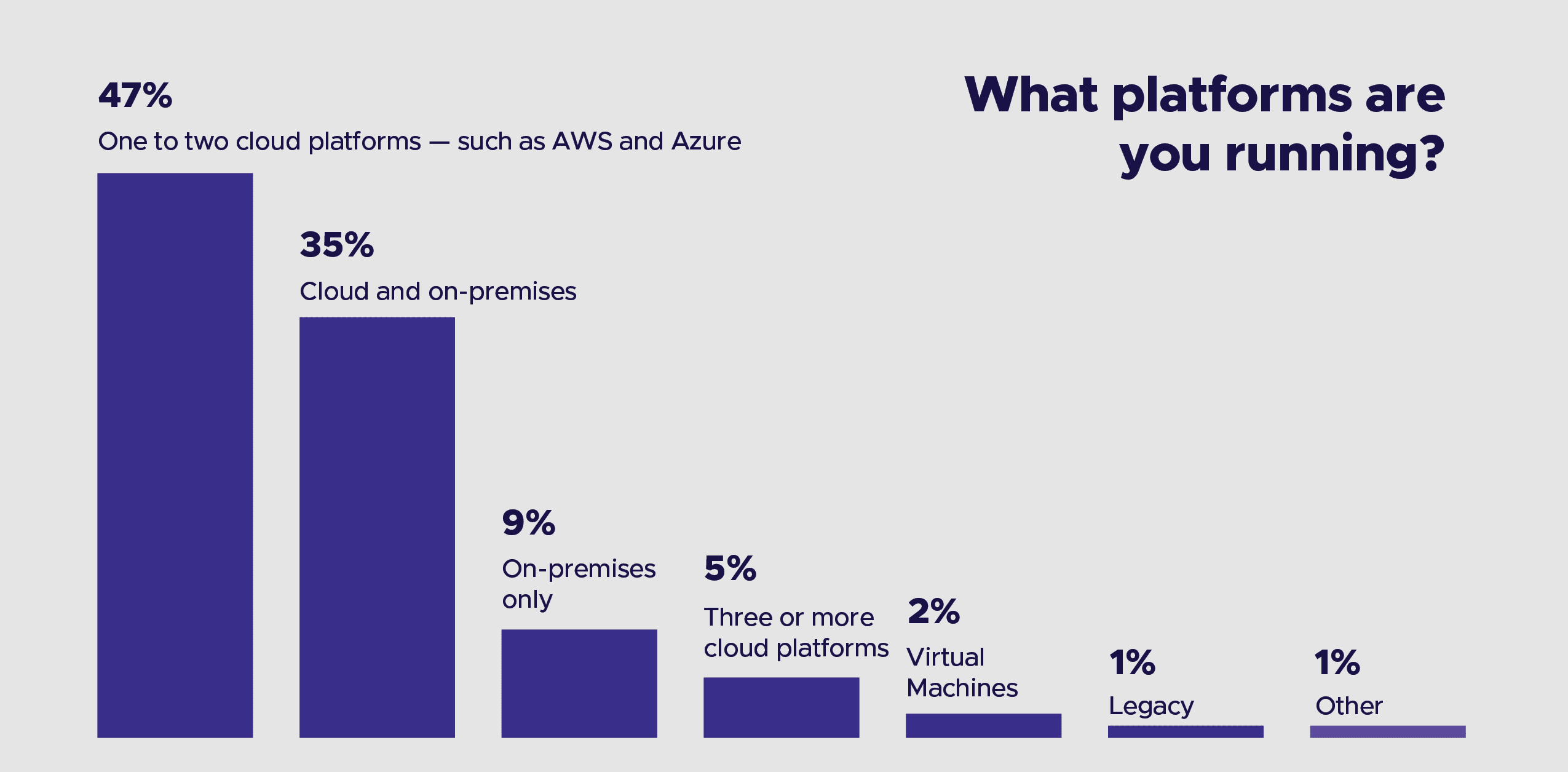
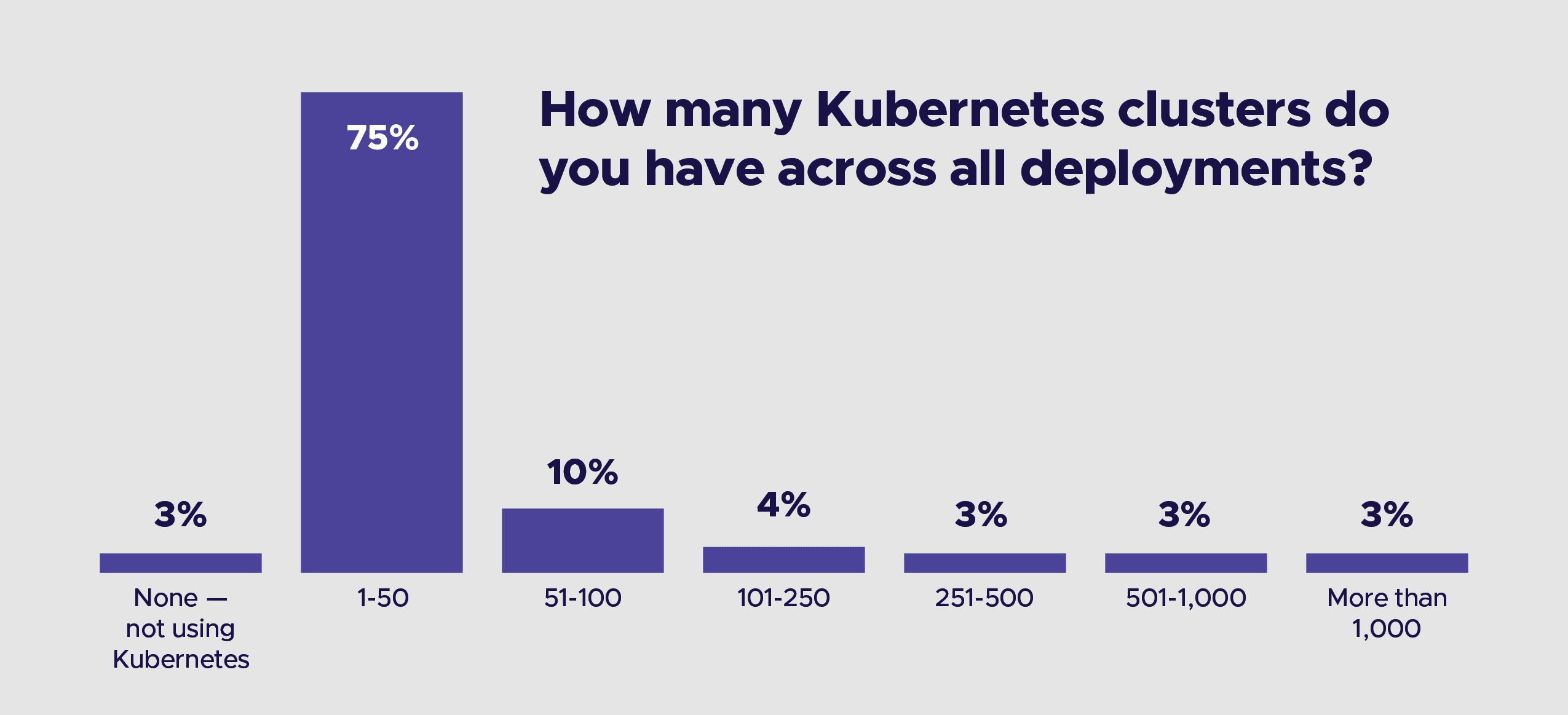
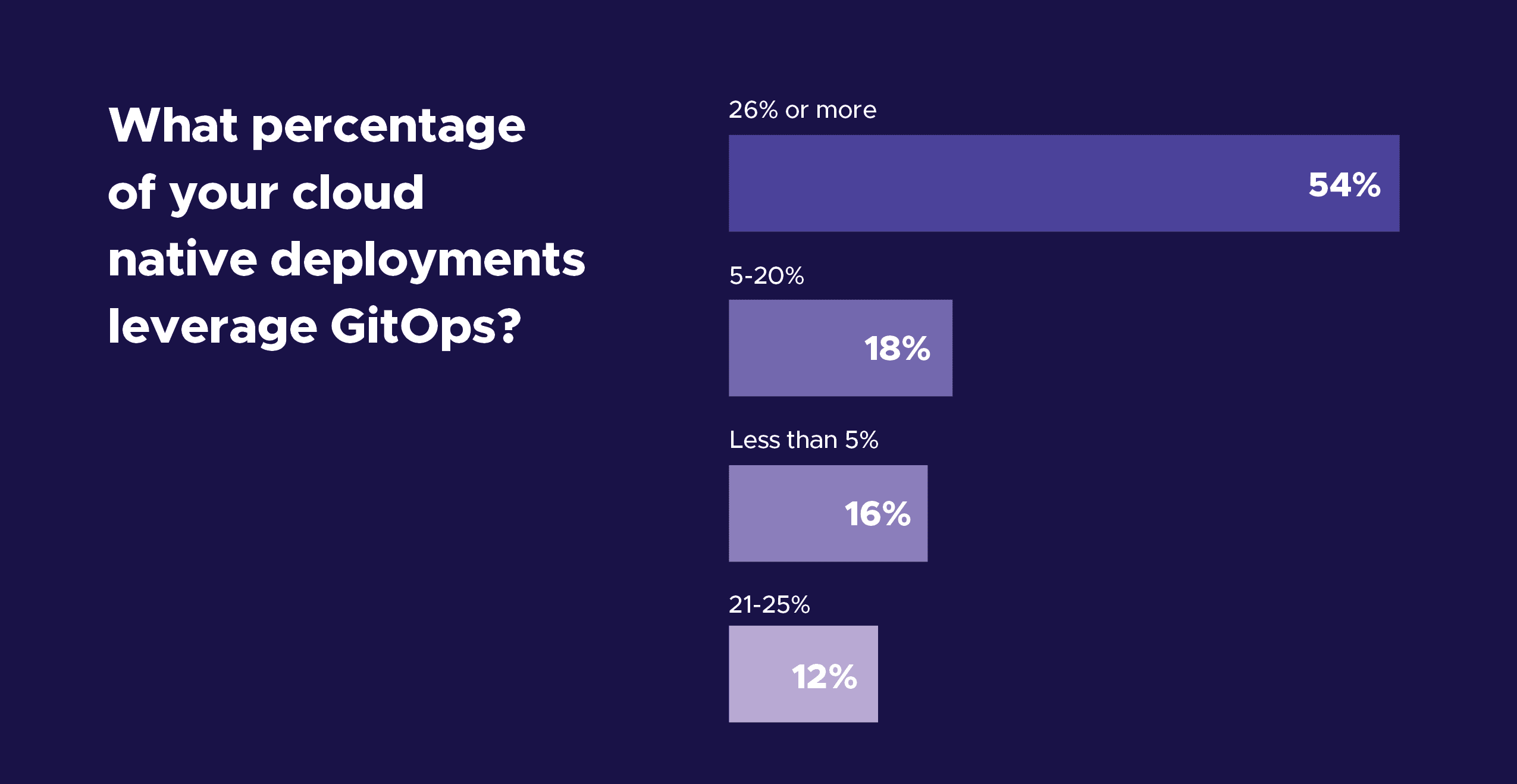
This has influenced the way people want to build and manage big, complex, and fast-changing technology fabrics. Kelsey Hightower once said we should “stop scripting and start shipping”, and our data revealed how many view GitOps as the best way to achieve this.
Faster software delivery was ranked the number-one reason for embracing GitOps (71%), with improved configuration management and greater deployment consistency tying second and third at 66% each. Also landing in the top five list of GitOps draws were easier rollbacks (53%) and simplified Kubernetes management (51%).
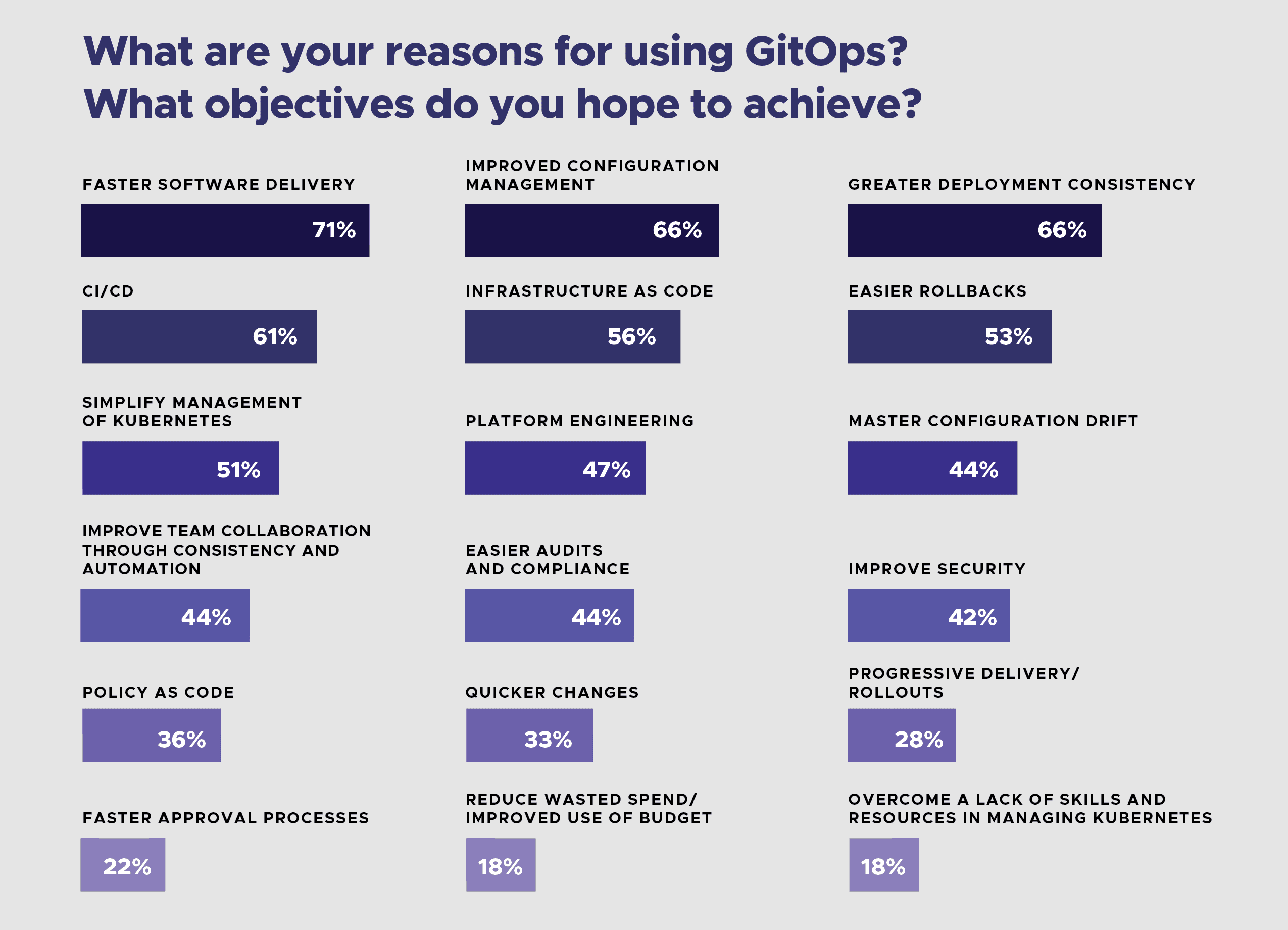
Pulling in some of the survey’s highest responses were anticipated security improvements. GitOps’ inherent automation is seen as a means to replace mistake-prone manual processes, removing the risk of misconfigurations that have long been exploited by attackers. Swapping manual for automation was ranked the number-one security benefit at 69%. There’s also a strong desire to shield Kubernetes and live production environments from direct access – this came second at 62%. And, echoing an earlier question’s findings, 60% said fast repair and rollback are key objectives in the quest to improve security.
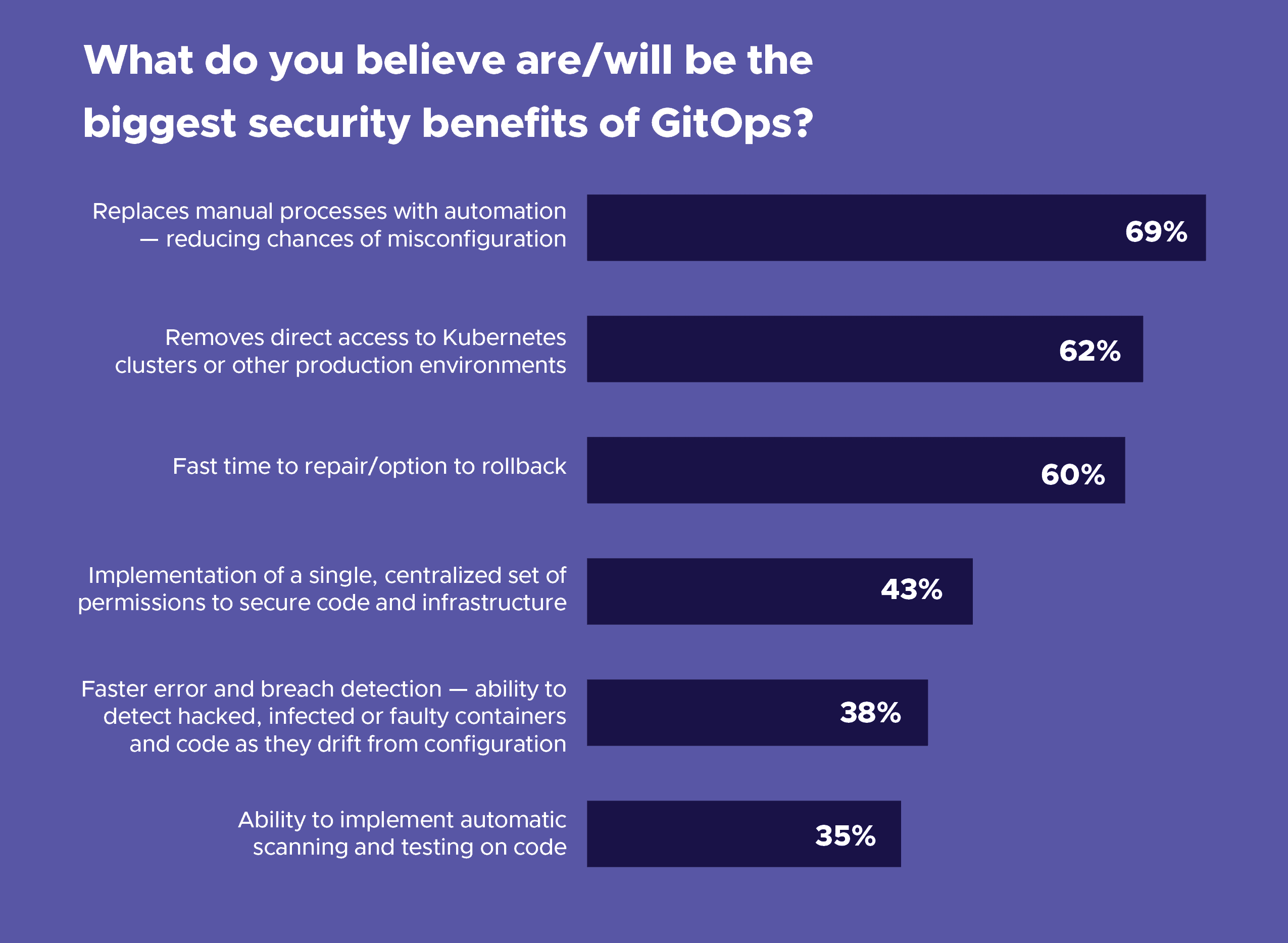
Interestingly, there is a crossover between automation and some cultural obstacles people have experienced or expect to encounter during their GitOps rollouts. A reluctance by DevOps team members to relinquish control and simply “trust” the machine or put their faith in features such as declarative configurations was listed as the biggest actual or perceived problem by 46% of respondents. Lack of training and experience came second with 46%.
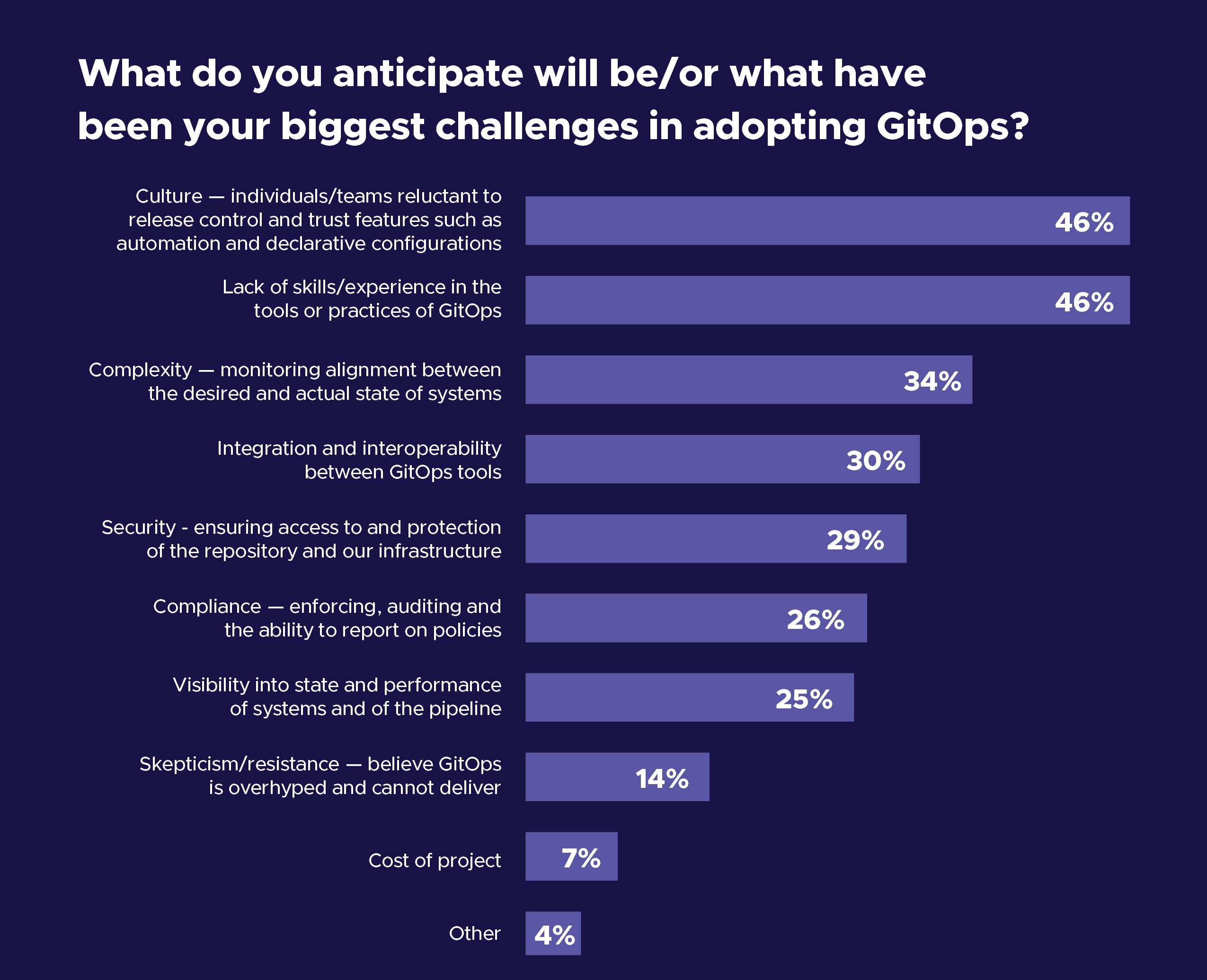
Despite these concerns over skills, few seem to be addressing the situation. Nearly 70% not only had yet to complete any GitOps training or certification, but they also had no plans to participate in any courses.
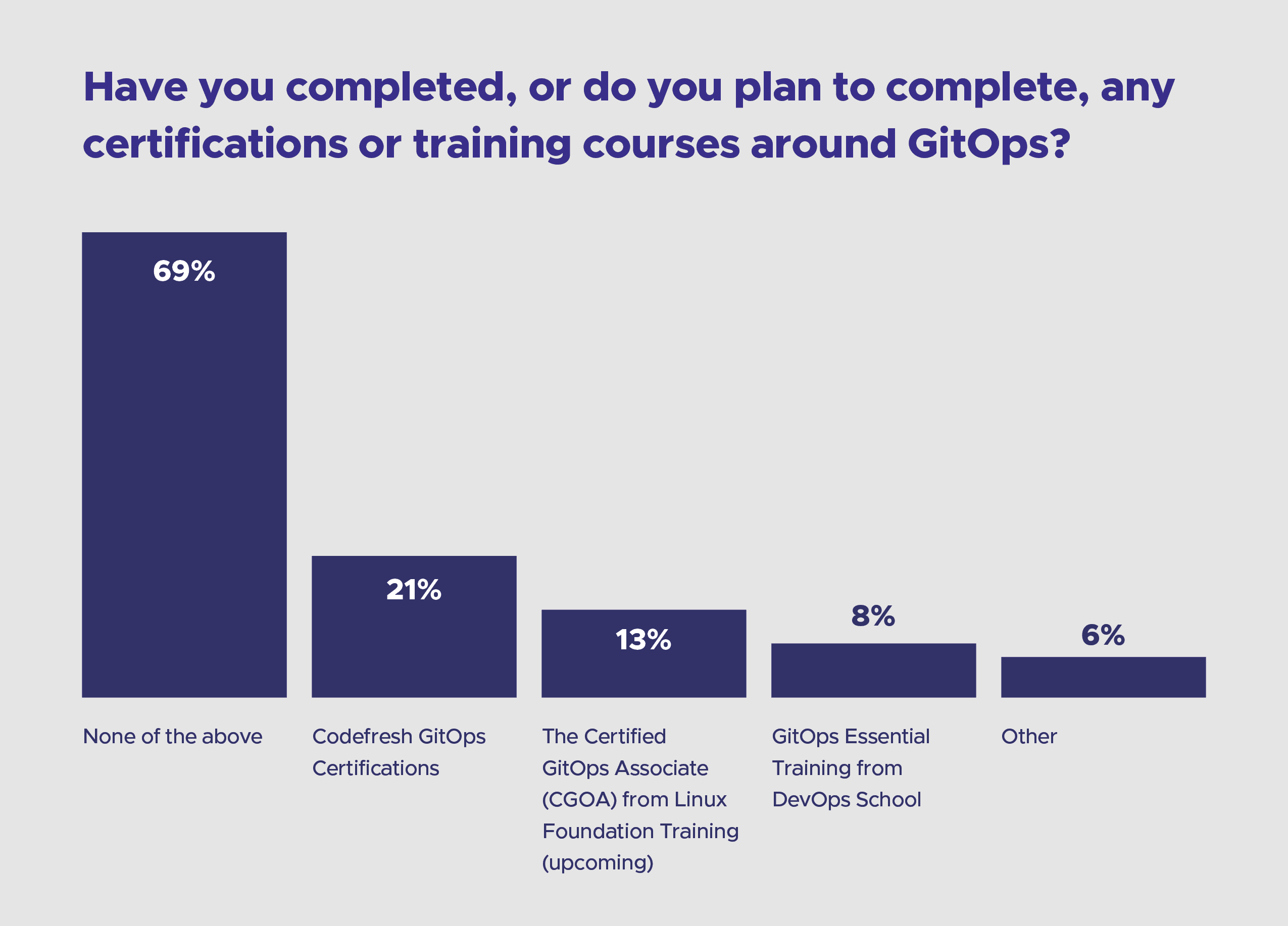
With this in mind and with GitOps adoption riding high on cloud and Kubernetes, users are looking for two key attributes in tools and practices. First is maturity and breadth of features with 65%, closely followed by ease of use at 64%. Other factors polling strongly in people’s considerations were integration with other makers’ GitOps tools, the ability to work with existing tools and environment, and the strength of adoption by their peers.
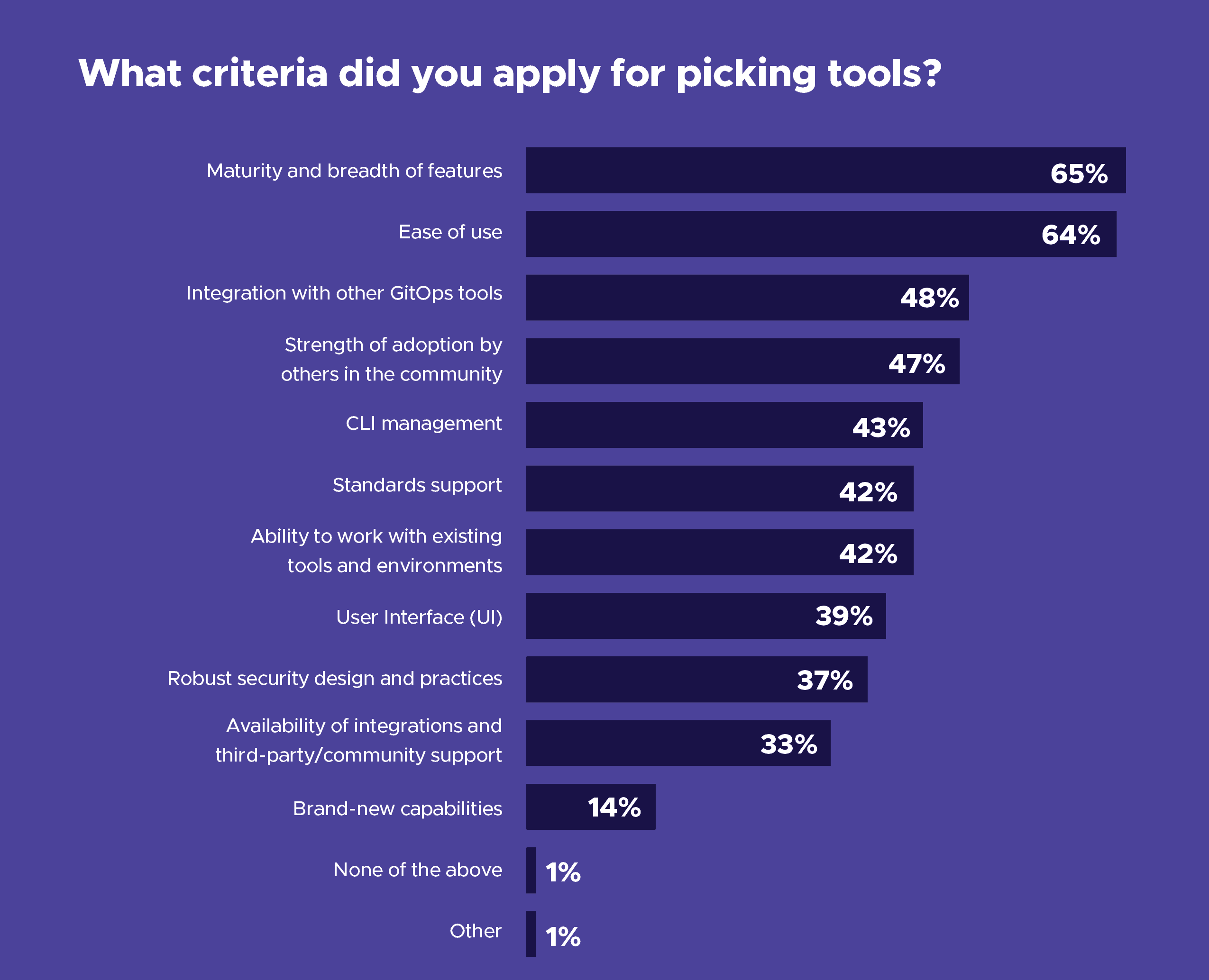
Finally, when it comes to adoption, ArgoCD and Flux were the most widely used CNCF GitOps projects.
Our GitOps microsurvey was conducted between July and September 2023 with 220 overall responses with varying response rates throughout. Community members from the Continuous Delivery Foundation, Codefresh, and Weaveworks helped design the survey.
To learn more about GitOps, get involved with the CNCF GitOps Working Group (WG). Sitting under the CNCF App Delivery Technical Advisory Group (TAG), the focus of the GitOps WG is to clearly define a vendor-neutral, principle-led meaning of GitOps and establish a base for interoperability between tools, conformance, and certification. Lasting GitOps programs, documents, and code will live within the CNCF OpenGitOps project, which is housed in the CNCF Sandbox and guided by the WG.
The Certified GitOps Associate (CGOA) exam will allow candidates to demonstrate their understanding of GitOps principles, terminology, and best practices in setting up a GitOps-managed software system in addition to related practices such as Configuration of Code, Infrastructure as Code, DevOps & DevSecOps, and CI & CD and how to map them to GitOps. It will be available soon from CNCF and the Linux Foundation Training & Certification. Apply to be a beta tester.
You can also attend the upcoming virtual event, GitOpsCon Europe 2023. The event will take place online from December 5-6 and is designed for all levels, from those new to GitOps to those currently using GitOps within their organization. Talk topics will include getting started with GitOps, scaling and managing GitOps, lessons learned from production deployments, technical sessions, and thought leadership.
The full survey data can be found on GitHub. You can download the full report here.